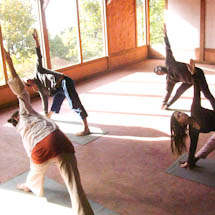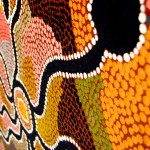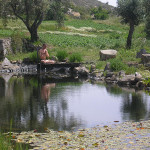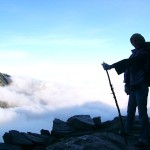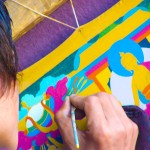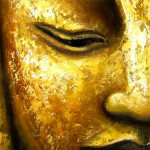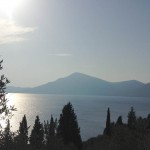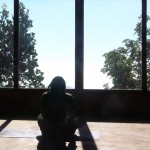Breath & Vital Force
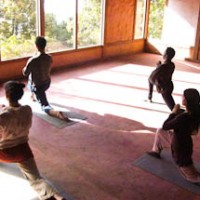
There are a few general terms and themes that are important to understand in relation to spiritual work; concepts that are common among many religions and doctrines.
Understanding these is not meant to burden ourselves with more useless intellectual knowledge, but to make it real and meaningful, so that we may use it in our life, for our own benefit.
Prana or Chi
The Sanskrit term ‘Prana’, as well as the corresponding term ‘Chi’ (or ‘Qi’) in Chinese culture, originally stands for: a subtle, fundamental vitality or ultimate life force; the active principle of anything alive; or energy flow.
Pure Prana
Developing sensitivity and awareness to the life force is essential for the spiritual aspirant for various reasons. First, let us realize that all that we absorb from our surroundings nourishes us in one way or the other. Once we understand this, we can comprehend the importance of choosing to nourish ourselves in a positive and supportive way. This includes the air we breathe and our surrounding environments (location, house, work, family and friends), the sound and visuals we are exposed to, themes of entertainment (books, movies, newspapers), as well as the water we drink and food we consume.
Working with Prana
Prana or life essence can be increased and utilized in various ways for spiritual development. Chi-Kong and Yoga, for instance, are both practical methods to develop and control our vital-force. This vitality is closely linked to, and is represented by, respiration.
Pranayama
The term pranayama is a Yogic term that defines respiratory practices as voluntary breath control practices, which are usually of the nature of prolonging the process of breathing. Patanjali’s Yoga Sutras, the oldest textbook available on yoga, written about 1500 years ago, discusses pranayama in three verses: “While practicing the posture or body position (asana), the break in the regular rhythmic breath (inhalation and/or exhalation both) is pranayama.
Pranayama is the means to remove the ‘veil’ that is covering the internal illumination.
As a result of pranayama, the mind gets prepared and eligible for further yogic practices, such as (dharna) meditation or concentration”.
PYS II 53, 52, 49 (1)
Beyond the physical advantages of pranayama, this practice improves the clarity of thinking and mental concentration, and it is also a simple yet effective way to calm of the mind.
Pranayama is a tool used to keep the mind occupied by concentrating on breathing, so that it stops its habitual movement from one object of thought to the next. This practice can be understood through a metaphor of sending a naughty child to his room; although he is will remain quiet for a while, it is only temporary.
So…What does this have to do with me?
As Meditative Artists, we can learn to use the breath and unitize it for our advantage in numerous ways. We can make the breath a very useful tool in any meditative practice, and learn to use it is a wonderful way to develop general wellbeing. Furthermore, in working with the breath, we can deepen our connection with ourselves – moment to moment. The breath is always with us; always in the “now”, and if we learn to use it and work with it, it will always available to us, just waiting for us to notice it.
The Breath as a Good Friend
The breath can be seen as a good friend; one that is loyal to us at all times. The breath can be used to understand our present state, and it can also transform a present situation. For example, focusing on the breath helps us remain attentive and present through anything we may do.
Breathing deeply relaxes us and allows us to withdraw from our habitual thought process and endless inner distractions.
When we bring these basic and simple understandings into the level of experience, they become real and helpful. When we bring them into our Meditative Art practice, it enables us to create art from a peaceful and content state of inner harmony.
This can serve as the stepping stone to deeper levels of the present and help us develop a stronger connection with ourselves as well as the very source that leads our practice.

